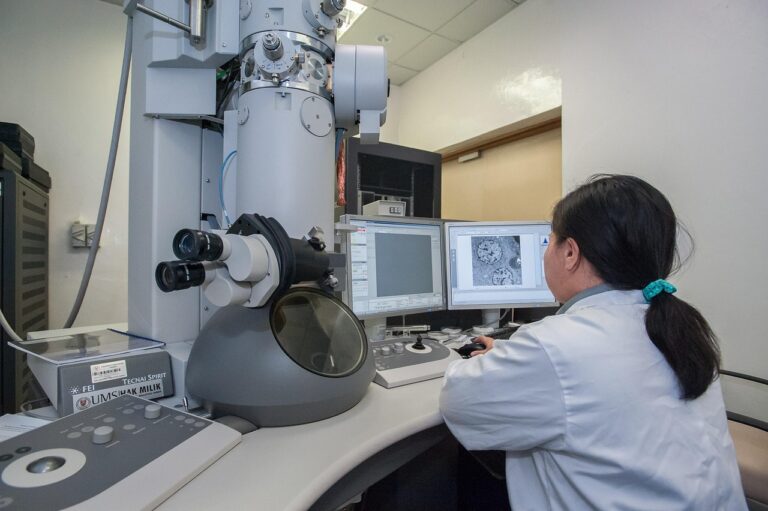In 1901, managers at Bethlehem Steel claimed they raised pig-iron loading from 12.5 to 47 tons per man-day by standardizing shovels and pacing rest breaks; a century later, delivery apps schedule 120 stops across an eight-hour window using similar logic: break work into steps, measure, and optimize. The intellectual bridge is Scientific Management, a toolkit built around time study, standard work, and incentives.
Suppose you want to know when Scientific Management actually pays off, how to apply it without burning people out, and where it fails outright. In that case, this article gives you concrete guardrails, typical gains, and implementation steps with numbers and trade-offs spelled out.
What Scientific Management Is and What It Actually Does
Scientific Management, associated with Frederick Winslow Taylor (1880s–1910s), rests on four mechanisms: measure tasks with a stopwatch; decompose and redesign motions; codify “standard work” that anyone trained can repeat; and align pay to output via piece rates or bonuses. The causal logic is simple: measurement exposes variation; redesign removes unnecessary motions; standardization locks in the new method; incentives help adoption and sustain effort.
Time-and-motion work often targets three levers: fewer motions per unit, smaller within-step variability, and matched human load. Frank and Lillian Gilbreth famously cut the motions in bricklaying by reorganizing material placement, reporting large step-time reductions. Taylor’s teams found an “optimal” shovel load around 21 pounds by varying scoop sizes so that each lift used similar effort; the goal was to maximize throughput without pushing fatigue past a threshold where error and injury spike.
On wages, Taylor promoted differential piece rates higher pay per unit once a defined standard is met, lower if not. In modern terms, these create a kinked incentive curve: modest output increases at low pay, then a jump once a worker crosses the threshold. Evidence from manufacturing and service case studies suggests output gains in the 10–30% range when standards are well designed and quality is separately enforced; the eye-catching 2–4x improvements tend to require starting conditions with obvious waste, poor tool fit, or severe mis-sequencing. Where quality is not measured, piece rates can raise defect rates, often silently.
Taylor (1911): Pig-iron handlers increased from 12.5 to 47 tons per worker-day under prescribed methods and pacing.
The pig-iron case illustrates the full mechanism: worker selection (not everyone can sustain the pace), precise pacing with built-in rest (he reportedly allowed frequent pauses), standardized tools (shovel sizes matched to material), and a pay plan that rewarded compliance. The story’s exact magnitude has been debated, but the lesson is consistent: large gains appear when tasks are tightly repeatable, tools are mismatched to the job, and management actively engineers both method and incentives.
Where It Works and Where It Does Not
Scientific Management tends to excel when tasks are short-cycle (under 10 minutes), repeated thousands of times per month, observable, and decomposable into steps with low external variability. Examples include warehouse picking, call-center triage scripts, claims data entry, injection molding setups, and routine lab workflows. In these domains, a one-time redesign and clear standard can amortize quickly; a rule of thumb is that even a 5% cycle-time reduction pays back within a quarter if the process runs at least 1,000 cycles per week.
It struggles where outputs are highly novel, interdependent, or strategically ambiguous: R&D, complex negotiations, idea-generation workshops, or software design beyond routine coding. In those settings, over-specification leads to Goodhart’s Law: “when a measure becomes a target, it ceases to be a good measure.” Proxy metrics (lines of code, calls per hour, patents filed) can be gamed, pushing teams toward quantity over impact. Similarly, processes with high arrival variability (emergency departments) or high consequence of error (aviation maintenance) need buffers and judgment that pure standard times do not capture.
Quick Fit Test
Ask five questions: 1) Can the task be described in 7±2 steps? 2) Do two operators performing it show a cycle-time spread under 30%? 3) Is demand stable within ±20% week to week? 4) Are defects easy to detect within one cycle? 5) Is the cost of a defect less than the cost of a minute’s extra checking? If you answer “yes” to at least four, Scientific Management techniques are likely to yield durable gains. Fewer than three “yes” answers suggests looking first to design, capacity buffers, or cross-functional coordination instead.
Implementing Without Backlash
Start with measurement that respects noise. Record at least 30 cycles per task variant to estimate a stable mean and spread; note special causes (e.g., tooling jam) separately. Use a simple time model: total time = value-adding steps + necessary non-value steps (setups, travel) + avoidable waste. Do not set a standard from the single best trial; a pragmatic approach is “mean of the best quarter” minus an allowance for fatigue and variability. For ongoing control, a basic individuals chart (moving ranges of consecutive cycles) can flag drifts without heavy statistics.
Co-design the method with the people who do the work. A 1–2 day kaizen-style workshop can map the current method, test alternative sequences, and write a one-page standard (purpose, steps, key points, reasons for key points). Plan for training loads: 4–8 hours for a simple task, 16–24 hours for changeovers or safety-critical work. Expect a short-term dip of 10–20% as the new method becomes fluent; set a review at two weeks and at six weeks to lock in or adjust. Learning curves in repetitive tasks approximate a power law: each doubling of cumulative output often reduces time by 10–25% until a floor is reached.
Align incentives without inviting gaming or harm. Couple any output-based bonus with a quality gate (no pay uplift if defect rate exceeds a threshold) and a safety cap (pace limited by ergonomic guidelines). For manual handling, use conservative allowances: at least 10–15% time for fatigue and breaks, more in heat or heavy lifting. A widely cited reference is a 23 kg recommended weight limit under ideal conditions; reduce it substantially for awkward postures, long reaches, or high frequency. Algorithmic schedules should expose override options and reasons; log exceptions and audit for bias. Communicate the “why,” publish the metrics, and commit to revisiting them—transparency reduces the sense of surveillance.
Modern Adaptations: Lean, Algorithms, and Services
Lean manufacturing overlaps with Scientific Management on measurement and standard work but diverges on agency: it treats standards as the “current best-known method,” owned and improved by operators rather than imposed top-down. The dual pillars takt time and built-in quality (jidoka) temper the push for speed with immediate stops on abnormalities. In practice, organizations that blend the two see fewer backlash risks: they use time study to surface waste, but they let teams propose changes and they measure flow (lead time, throughput) alongside local productivity. Case studies in factories and clinics commonly report double-digit lead-time cuts with this approach, even when unit labor productivity moves less.
Algorithmic management extends the same logic with richer data. Warehouses route pickers to minimize travel; ride-hailing apps match drivers to demand in near real-time; call centers prompt scripts based on caller history. These systems can raise throughput and reduce idle time, but they also compress slack that used to absorb variability. Guardrails matter: in healthcare scheduling, for example, targeting 100% operating-room utilization is counterproductive; due to variability, many hospitals aim for 75–85% on elective blocks to keep waits and overtime in check. Queueing math explains why: as utilization approaches 100%, delay grows nonlinearly. In knowledge work, resist proxy targets that are easy to count but misaligned with value; measure outcomes (customer resolution, defect escapes, time to learning) and incorporate qualitative reviews to keep the system honest.
Conclusion
Use Scientific Management where tasks are repeatable, observable, and economically sensitive to seconds; design standards with the people who do the work; attach incentives to both output and quality; and set safety and transparency guardrails. Pilot on one process with thousands of monthly cycles, publish the before-and-after data, and only then scale. When novelty and coordination dominate, shift from stopwatch to system design flow, buffers, and fast feedback so the pursuit of efficiency does not erode the very outcomes you care about.


